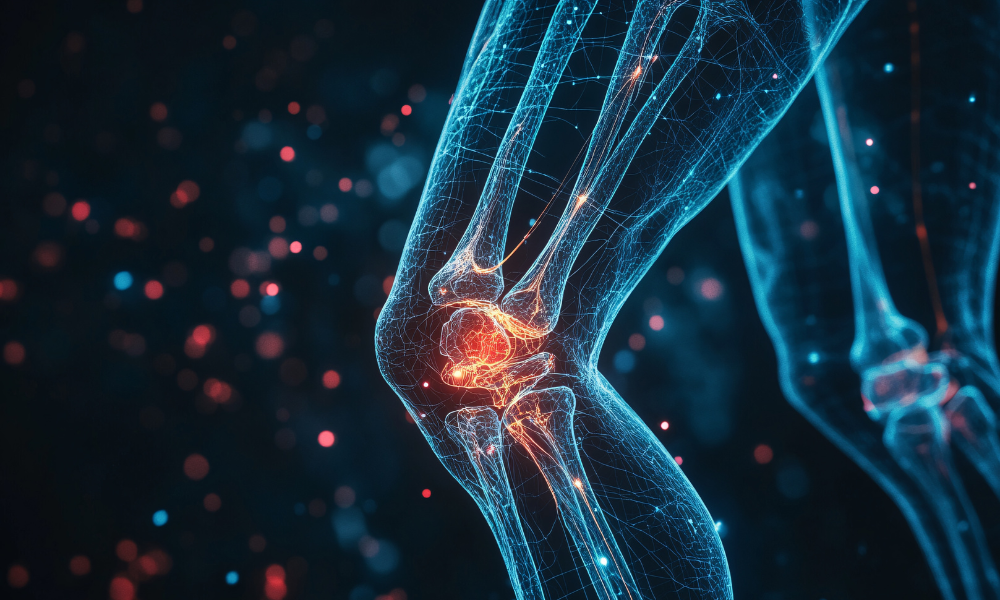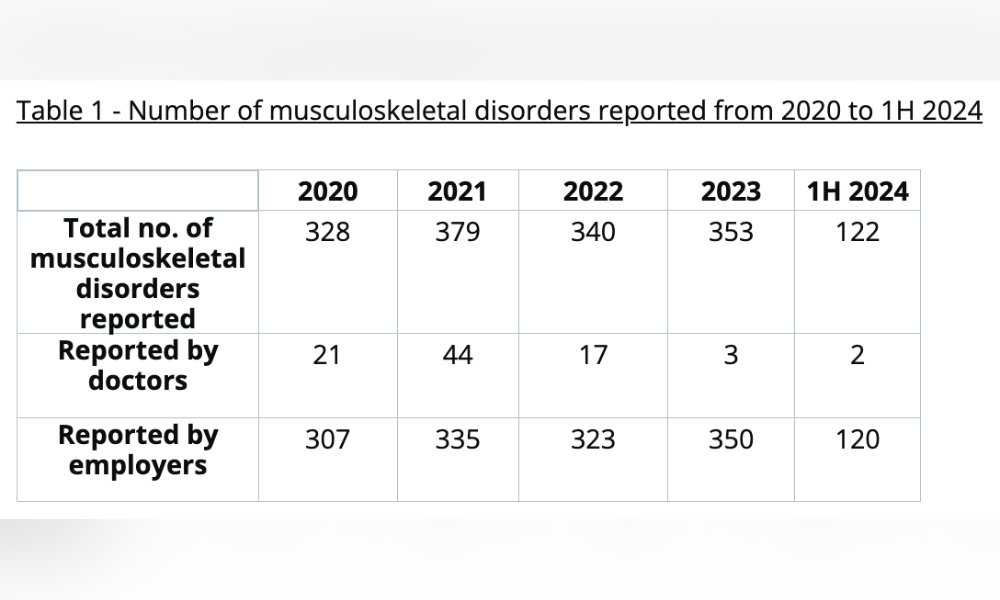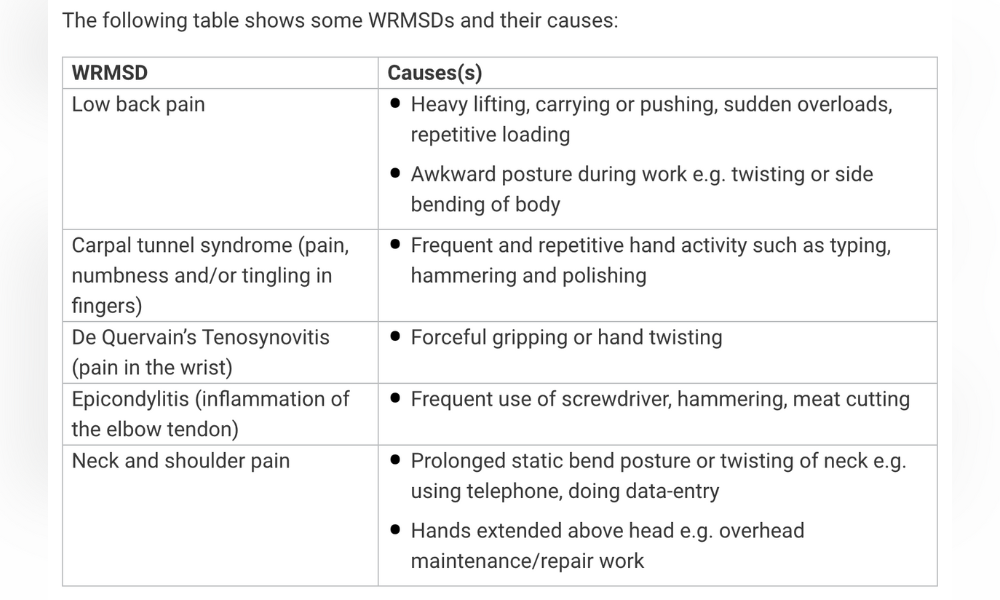
Back pain emerges as most-reported disorder in workplaces

More than 300 work-related musculoskeletal disorders are reported every year to Singapore's Ministry of Manpower (MOM), which urged employers to take steps to mitigate this risk in their work processes.
MOM revealed that they are recording an average of 338 work-related musculoskeletal disorders annually between 2020 and the first half of 2024.

Musculoskeletal disorders refer to diverse conditions affecting bones, joints, muscles, and connective tissues, according to the US National Library of Medicine.
Singapore's Workplace Safety and Health (WSH) Council said such disorders are characterised by discomfort, impairment, disability, or persistent pains in joints, muscles, tendons, or other soft tissues.
Between 2020 and the first half of 2024, back injuries made up 91% of the reported cases, while the rest were related to the upper limbs, according to MOM.
"Most disorders arose from acute conditions, such as back injuries which employers are required to report," the ministry said. "A small number were due to prolonged ergonomic aches and inflammation, which are typically diagnosed and reported by medical practitioners."
According to the WSH Council, some of the other common work-related musculoskeletal disorders include carpal tunnel syndrome, De Quervain's Tenosynovitis (pain in the wrist), Epicondylitis (inflammation of the elbow tendon), as well as neck and shoulder pain.

In its statement, MOM urged employers to mitigate risk factors in their work processes, such as by providing mechanical lifting aids, anti-fatigue mats, as well as refreshing training on lifting techniques.
"The government supports employers to introduce good ergonomic practices based on their workplace risks and workers' health needs," it said.
Employers can sign up for free ergonomics-related training for employees to better understand and prevent work-related musculoskeletal disorders at home, according to the ministry.
They are also urged to adopt technologies to monitor and reduce workers' exposure to such risks, by publicising these solutions on its website and engaging companies for technology trials.
There are also workplace safety guidelines and codes of practice on improving ergonomics in the workplace, which apply to different groups of workers including seniors and persons with disabilities, according to MOM.